Many people immediately think of scheduling a boiler service when they discover a leak in their central heating system. However, it’s important to note that this alone will not solve the problem.
While a Gas-Safe engineer can inspect your boiler components, they may not have the necessary time and tools to address more complex issues within the system. It’s possible for your boiler to receive a clean bill of health while a serious leak persists in your central heating pipes.
To effectively and cost-efficiently address your leak, consider utilizing a Trace and Access service offered by a professional leak detection company. This service can provide the expertise and resources needed to locate and resolve the issue.
To ensure that every corner of your house stays warm, your central heating system relies on pressurized water. However, if this pressure drops too low, your boiler will automatically shut off, leaving you without heat or hot water.
To uncover the root cause of the issue, you may need the assistance of a professional leak detection service. But before we delve into how we can help you tackle your central heating pressure problems, let’s explore why leaks occur and discuss a few steps you can take to try solving the problem on your own.
Central heating pressure Gauge Virtually all boilers have a pressure gauge on the front. Most of these are hydraulic dials, although you’ll find some have a digital display. Usually, you’d expect your boiler pressure to be around 1 bar if your heating is off, and around 2 bar when the heating is on and the system is warm.
Although there are a few sensitive components in your boiler that could cause pressure problems, generally, if your pressure reading is lower than this, it’s likely to mean that you’ve either got a leak – or you’ve got air trapped somewhere in the system.

Leaking central heating pipes or a boiler losing pressure may seem like a minor inconvenience at first, but they can actually lead to costly damages if not addressed promptly.
The issue is that your central heating system runs throughout your entire house, snaking under your floors, coursing through your walls, and sometimes even venturing into your loft space. Consequently, water can seep into hidden areas, causing significant damage before any visible signs emerge.
Even a seemingly insignificant, steady drip of water can result in dampness within the structure of your home. If left unattended, the cost of rectifying the damage can soar into the thousands, and sometimes even tens of thousands.
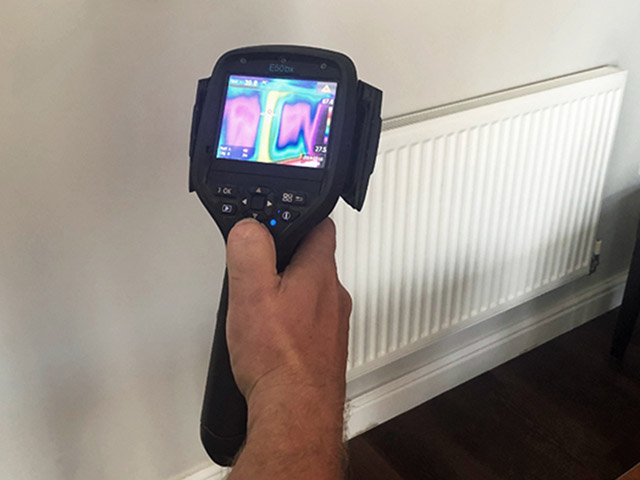
Air can be quite troublesome in central heating systems because it has a tendency to be compressed more easily than water. This means that as the pressure in the system increases, the air gets compressed by the water, causing the system pressure to drop once again.
But fear not, my friend! There is a simple solution to this problem – you just need to bleed your radiators. Don’t worry, it’s not as daunting as it sounds. All you’ll need is a trusty bleed key and maybe a towel, if you’re feeling extra cautious. With the bleed key in hand, gently release the radiator vent, and if there’s any trapped air, you’ll hear a satisfying hiss, much like letting air out of a tire. Just keep in mind that there’s water in there too, so as soon as the hiss stops, be prepared to tighten the vent back up, lest water starts spouting out.
It’s important to go through this process with each and every one of your radiators and towel rails, my dear reader. Don’t neglect any of them!
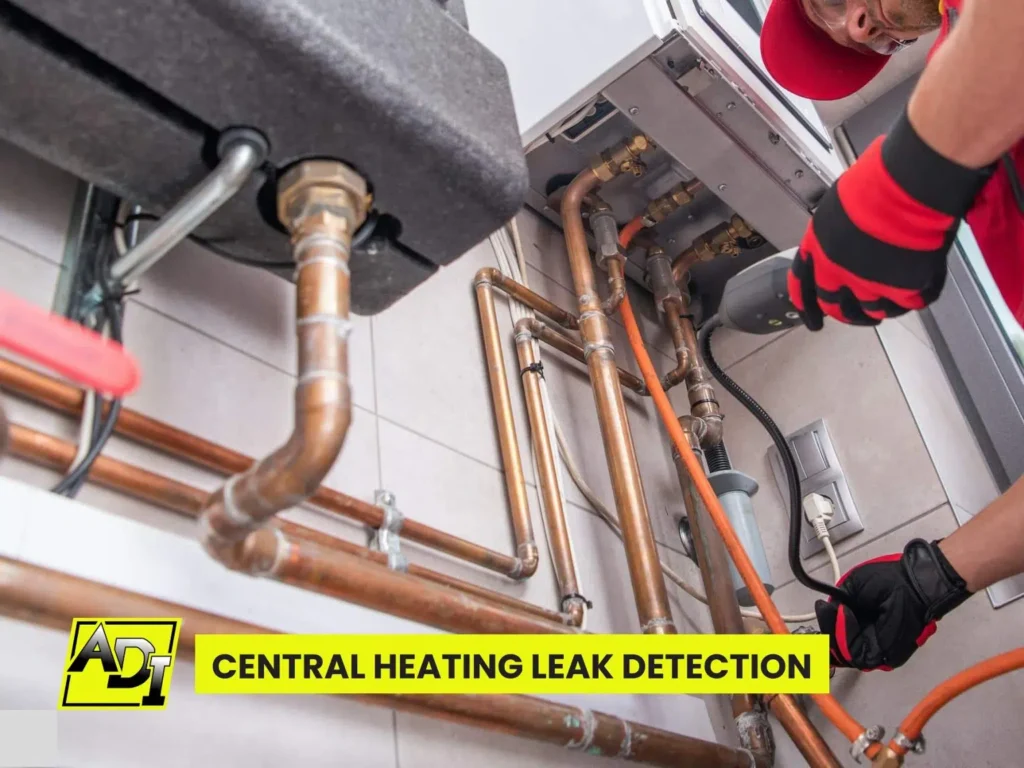
If you’ve successfully removed the air from your radiators, you may notice that the pressure in your boiler has dropped once again. Don’t worry, you can easily top it up using the ‘filling loop’.
The filling loop is usually a part of the system in many boilers. However, in some cases, it may be an extra length of hose that needs to be securely attached to the pipework near the boiler. If you’re unsure about any step in the process, it’s always a good idea to refer to your boiler instructions or visit the manufacturer’s website. They often have helpful videos that explain everything in detail.
Remember, maintaining the right pressure in your boiler is important for its optimal performance. So, follow these steps and keep your boiler running smoothly!
Usually, topping up the system fluid and pressure will require you to:
It’s important to follow your manufacturer’s instructions and feel confident before increasing the pressure in your boiler. Overfilling the boiler can lead to damage and more leaks, so proceed with caution.
If you notice a sudden drop in boiler pressure after following the procedure, it’s crucial to contact us immediately. This could indicate a significant leak that requires immediate attention.
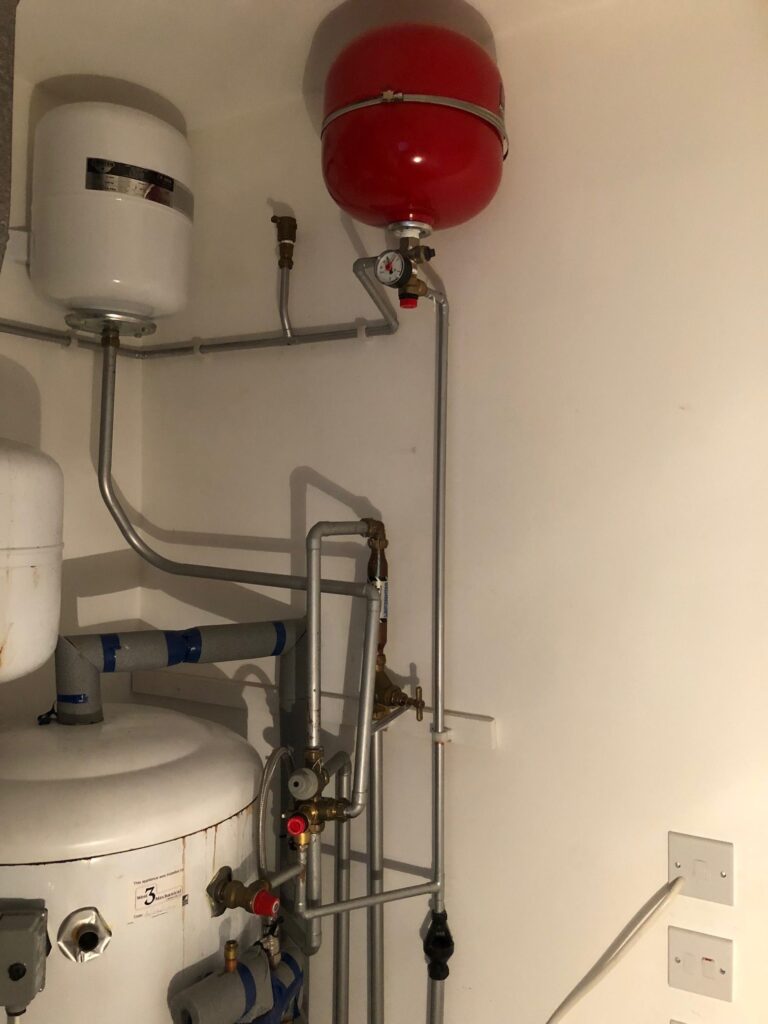
If you manage to refill your boiler and it maintains good pressure after bleeding your radiators, that’s fantastic news! However, if your boiler constantly loses pressure, it’s important not to simply keep topping it up and ignoring the underlying issue.
The liquid inside your radiators isn’t just plain water; it actually contains a mixture of chemicals. This special fluid, known as an “inhibitor,” is added during the installation of your system or boiler. Its purpose is to prevent the formation of sludge or corrosion in your heating pipes. The inhibitor is highly concentrated and needs to be diluted with water in your system. However, if it becomes too diluted, it loses its effectiveness, resulting in increased wear and reduced efficiency throughout your system. If you have a leak and continuously top up with water, you’ll eventually deplete the inhibitor completely.
Continually topping up from the filling loop is not a wise approach due to the potential damage it can cause. If your system keeps losing pressure, it’s time to take more serious measures.
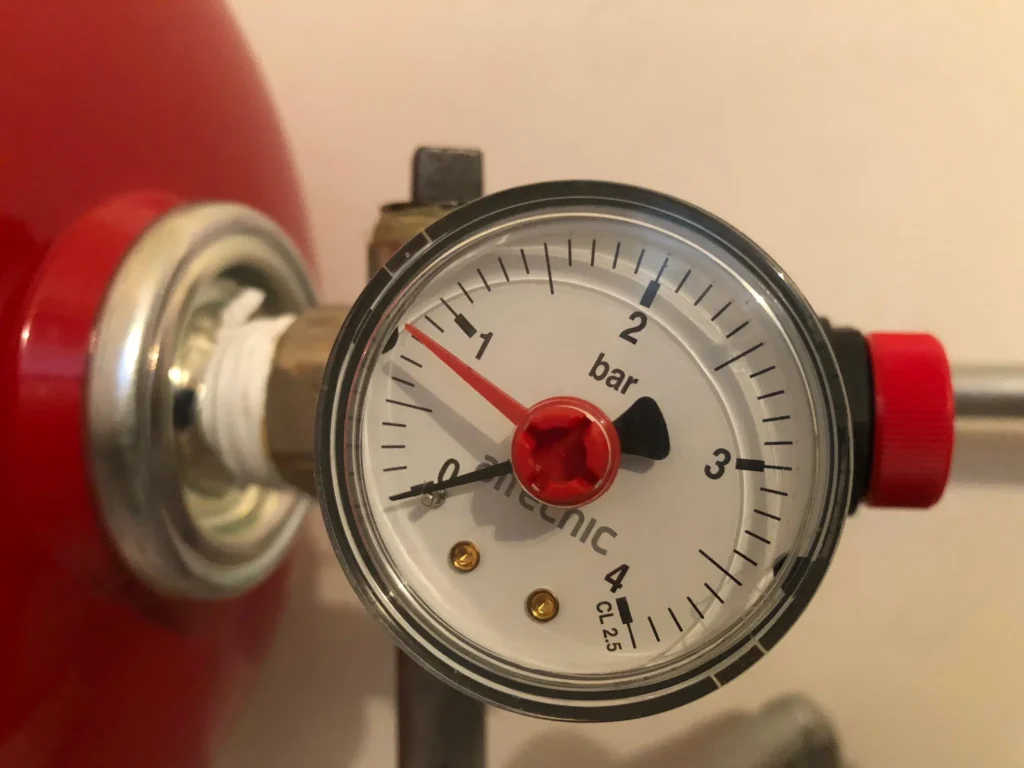
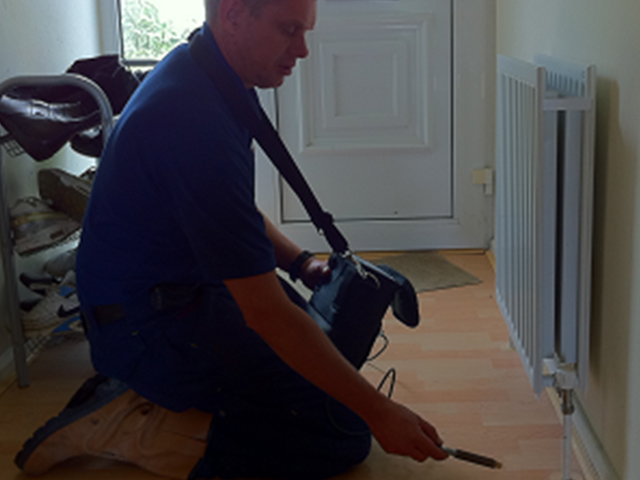
Tracer gases offer a fantastic, non-intrusive solution for detecting leaks in central heating systems. Here's how it works: First, the heating system is carefully drained. Then, we introduce a completely safe and non-toxic mixture of gases into the pipes. Next, we glide a highly sensitive probe along the network of pipes throughout your property. As the gas escapes through any cracks or openings, it sets off the probe, revealing the precise location of the leak. The beauty of this method is that the gas particles are so tiny that they can rise effortlessly through various materials like wood, carpet, tiles, and even concrete! This means we can pinpoint the leak without causing any mess or damage to your beloved home. Rest assured, we've got you covered!
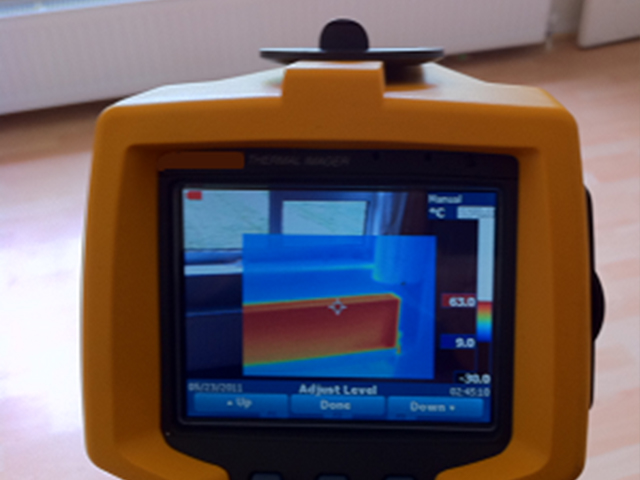
Thermal imaging is like having a superpower to uncover sneaky central heating leaks. We whip out our fancy camera that can capture the heat energy emitted by the pipes, allowing us to play detective and pinpoint where those pesky central heating pipes are hiding - whether it's under your floors or inside your walls. And that's not all! This amazing technology also reveals the source of the leak. How, you ask? Well, water leaks create temperature variations that are not so easily hidden from our thermal imaging camera. It's like the camera has a sixth sense for abnormal temperatures, and it captures those images like a pro. But wait, there's more! We don't rely solely on thermal imaging. We combine it with other leak detection techniques to give our engineers a complete picture of where those hidden pipes are lurking in your home. Armed with this knowledge, our team knows exactly where to search for the source of the problem. So, rest assured, we've got you covered!
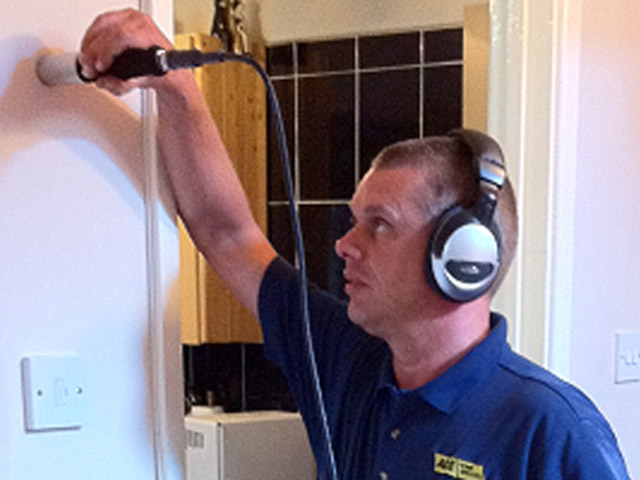
An acoustic microphone is like a superhero with super hearing. It can detect even the tiniest noise of a leak escaping from a pipe. No leak can hide from its sensitive ears! Our amazing acoustic listening devices take these leak noises and crank up the volume so our engineers can hear them loud and clear. But that's not all! We've got a clever trick up our sleeves. By using two listening devices at the same time, we can pinpoint the exact location of the leak. It's like a game of triangulation, where we calculate the distance between the microphones and the leak noise to figure out exactly where it's coming from. This technique is a lifesaver for those pesky pipes that are buried deep under floors or hidden inside insulated walls. We've got you covered!
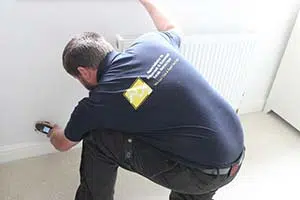
Moisture meters are used to check the moisture levels on surfaces. Our skilled engineer will conduct multiple readings throughout your home, particularly in areas where central heating pipes are located and around the boiler itself. This allows us to identify any areas with higher moisture levels, which can help us pinpoint the source of a water leak. If certain materials are more difficult to test, we may need to drill a small hole to obtain more accurate readings beneath the surface. While this approach isn't entirely non-invasive, it causes very minimal damage. Rest assured, we take great care in ensuring the process is as gentle as possible.
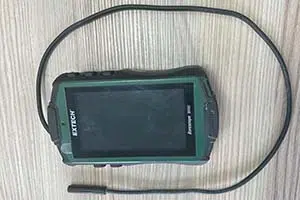
Borescopes are like magical inspection cameras that can explore the unreachable corners of our world. With their flexible tubes, equipped with a light source and camera, they capture stunning high-definition images and videos in real-time. The operator gets to witness the hidden secrets of walls, floors, and confined spaces that were once impenetrable. These amazing devices are particularly useful in detecting water leaks, as they navigate through the depths of darkness. In order to perform their magic, a tiny hole may need to be drilled, but fear not! The borescope is so minuscule, with a diameter of only 6mm, that the hole can easily be patched up, leaving no trace of its existence. It's like the borescope was never there, but the wonders it reveals will never be forgotten.
There are various leak sealants available for central heating systems that claim to provide a fast solution for finding and fixing leaks in pressurized systems. However, it’s important to be aware that they are never as effective as actually addressing the underlying problem.
The thing is, leak seal is not a precise science. While it may partially resolve the leak, it can also adhere to rust and corrosion, potentially causing further issues. In some cases, using sealant has even resulted in bigger problems that require repairs in other parts of the system.
So, don’t be enticed by a quick-fix approach to a problem that has the potential to cause significant damage to your property.
Virtually all building insurance policies got you covered when it comes to “Trace and Access” for central heating leaks. This means that any charges you incur will be refunded to you, so no need to worry about the financial burden. And guess what? We have amazing partners who are ready to assist you with any insurance claims related to the leak. Say goodbye to the hassle of paperwork and phone calls, we’ll take care of it for you!
We understand the stress that comes with being in a home with a leak, no heating, and no hot water. It’s not a fun situation to be in, but don’t worry, we’ve got your back every step of the way. We’ll make sure you receive all the help you need, and to top it off, we’ll provide you with all the necessary reports to support your insurance claim. You can count on us to make this process as smooth as possible.
If you think there’s a leak in your central heating system, acting fast is the key to keeping your costs down.
Get in touch with us now by calling 01344 721960 . You’ll speak to a friendly and knowledgeable member of the team who’ll help you deal with your central heating leak today.
We serve the whole of Bracknell, Berkshire including all villages in the area.
Privacy Policy | Terms & Conditions | Sitemap | Registered Office Address: 128 City Road, London, United Kingdom, EC1V 2NX